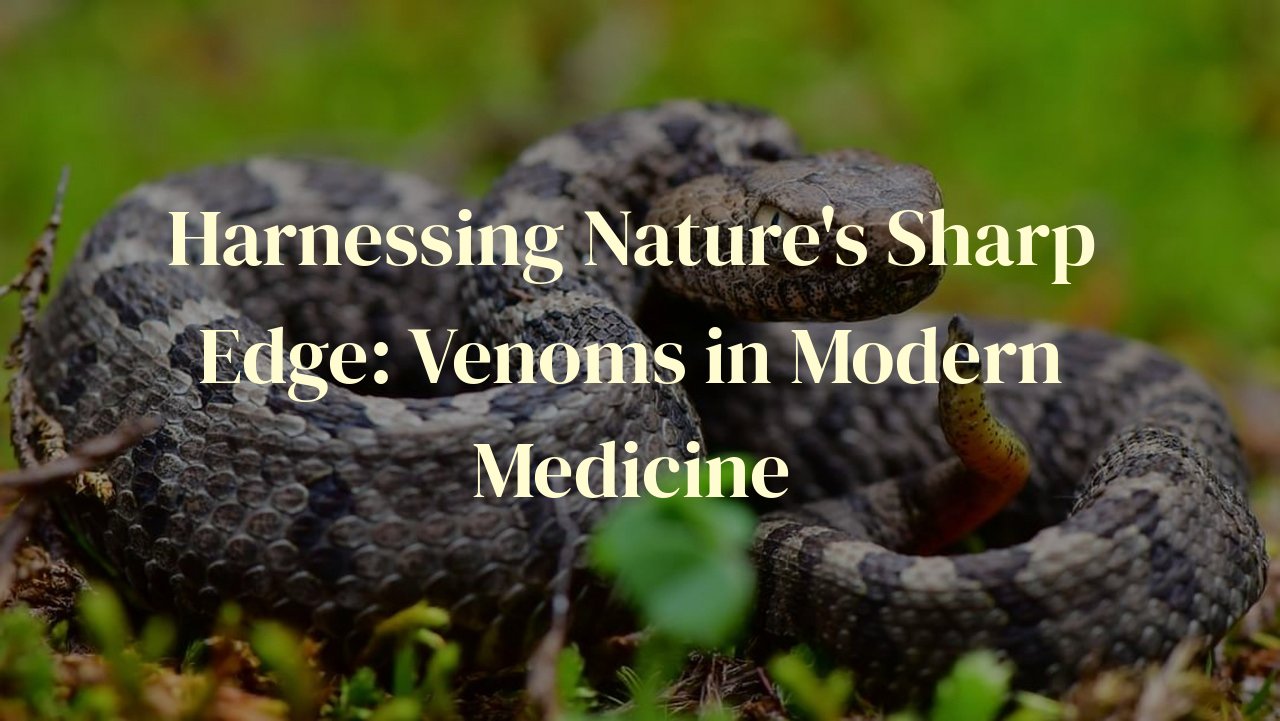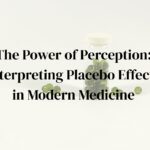
Delving into the paradox of poisonous venoms as architects of groundbreaking medical treatments, this exploration uncovers the fascinating transition from lethal toxins to life-preservers. By examining the sophisticated mechanisms venom employs, we unlock an understanding of its significant role in advancing therapeutic solutions. Far beyond the fear and folklore surrounding these natural compounds, lies a potent source of pharmacological innovation. In this post, an intricate dissection of venom’s potential will reveal its promising applications, and you, the reader, will discover the transformative impact these developments can have on healthcare and personal well-being.
Table of Contents
Venomous Beginnings: The Earth’s Natural Chemists
As a health expert and dietary therapy enthusiast, I’ve always been awestruck by the intricate dance of nature’s elements, including the mysterious alchemy that turns peril into promise. Venomous creatures, often regarded as nature’s malevolent artisans, have, in fact, served as unsung heroes in the annals of pharmacology. The lethal concoctions they wield for predation and self-defense are reservoirs of biochemical wonders, shaping an unexpected frontier in modern medicine.
From the serpentine labs that slither in the grass to the marine apothecaries lurking beneath waves, these creatures have perfected their craft over millions of years. Their venoms are not merely toxins but complex cocktails of enzymes, peptides, and proteins, each with unique properties and specific targets. Their evolutionary genius lies in precision; where one might paralyze a nerve, another could coagulate blood with terrifying efficiency.
In my professional journey, I’ve marveled at how the venom from a Brazilian pit viper laid the groundwork for ACE inhibitors, a cornerstone in managing hypertension. A Gila monster’s saliva contributed to the development of a medication for Type 2 diabetes. Such serendipitous discoveries are poignant reminders of nature’s sharp edge that both endangers and saves lives. I often ponder on my forays into the wilderness, where each encounter with nature’s chemists is a humbling experience, a silent acknowledgment of the delicate balance we share.
Documenting this elegant paradox, venoms have ascended from feared entities to coveted allies. Each venomous species is akin to a natural library, brimming with molecular knowledge awaiting our decipherment. Their potential in developing life-saving medications is nothing short of alchemical gold, turning grisly grimaces into beacons of healing. As we continue to explore these potent elixirs, venom’s chapter in medical lore is only beginning to unfold its remarkable narrative.
A Searing Touch that Heals: Analgesic Properties of Venom
The enigmatic nature of venoms has captivated our curiosity and fear since time immemorial. Contained within these natural concoctions are potent molecules that, while traditionally associated with pain and danger, now emerge as beacons of relief in the world of pain management. My deep dive into the transformative analgesic properties of venom reflects a personal journey of amazement and respect for these misunderstood substances.
One may wonder how something so inherently painful could pave the way for analgesia. It’s a fascinating paradox I’ve encountered in my research and writing: the chemical components in venom that wreak havoc can, in controlled doses, serve as a powerful block against pain signals. Peptides like those found in the venom of the marine cone snail produce an effect similar to that of opioids—without the same risk of addiction or adverse effects, offering a glint of hope in the overwhelming gloom of chronic pain disorders.
My explorations uncovered the story of ziconotide, a synthetic version of cone snail venom compound, now an FDA-approved medication for severe chronic pain that is refractory to other treatments. Here lies the profound potential of venom-derived analgesics—a testament to nature’s innate aptitude for creating complex and multifaceted molecules that await our understanding and application. This isn’t merely science; it’s an art form where nature, ever the meticulous chemist, crafts compounds that challenge our very notions of pharmacology.
How could we ignore the call of such bio-architects? Having delved into patient testimonies and pharmacological data, I’m struck by the duality of venoms—a caustic force that, under a healer’s lens, becomes a source of solace. The commitment of researchers in unraveling venom’s mysteries strengthens my belief in the incredible synthesis of nature and medicine—a synergy forging new frontiers in analgesic therapeutics.
It is this transformative power of venoms in pain management that continues to inspire and drive research forward. Standing on the threshold of groundbreaking medical advances, we owe it to the natural world to explore such a paradoxical gift. The searing touch of venom, under the discerning eye of science, indeed harbors the gentle embrace of healing—a fact that my blogging journey has brought to light with every awe-inspiring discovery.
Turning Tides in Cardiovascular Care: Venom-Based Medicines
The intricate dance between predator and prey has long fascinated me, revealing a gallery of evolutionary masterpieces within the realm of venoms. But little did I imagine that these natural weapons would one day transform cardiovascular care. As a dedicated follower of health innovations, witnessing venom’s metamorphosis from foe to friend in treating heart conditions is nothing short of miraculous.
Capoten, for instance, stemming from the venom of the Brazilian pit viper, was a revelation—the first of the ACE inhibitors that became a cornerstone in managing hypertension and heart failure. A creature I once viewed with apprehension, now serves as the inspiration behind a medication that safeguards countless hearts, including, quite personally, the heart of a loved one who regained their vitality thanks to this medical marvel.
The leap from viper to medicine cabinet doesn’t halt there. Integrilin, a drug I’ve seen aid patients after heart attacks, owes its existence to the pygmy rattlesnake. As a platelet aggregation inhibitor, Integrilin thwarts the clots that jeopardize recovery post angioplasty. The brilliance of replicating venom’s precision in halting undesirable blood clotting remains one of the most humbling lessons in my pursuit of health knowledge – a serendipitous twist of fate I’ve had the privilege to witness firsthand.
And let’s not forget the cone snail, its venom paving the way for Prialt, a severe pain reliever used when morphine loses its touch. For those suffering unrelenting pain, including a dear friend who once wrestled with the aftermath of surgery, Prialt has been a beacon of relief, innovative in its specificity, and life-altering in its impact.
As a passionate advocate for blending nature’s ingenuity with our medical toolkit, venoms are more than a biological curiosity—they represent hope, a testament to nature’s potential to heal the very hearts it could once easily stop. And each day, as I delve deeper into the world of healing, the respect I have for these natural chemists grows, bridging the gap between fear and gratitude in the chambers of my heart.
The Immune System’s Unlikely Ally: Therapeutic Enzymes from Venom
There’s an exquisite irony in nature’s tapestry when the very compounds that could cause us harm turn into pioneering treatments. During my forays into examining ancient remedies, I’ve come across many a brew and potion, but none as paradoxically life-affirming as the therapeutic enzymes derived from venom. Harnessing these potent molecules, modern scientists have maneuvered them into becoming our immune system’s most intriguing allies.
My intrigue peaked upon learning about the enzyme Hyaluronidase, found in bee venom, which shows promise in increasing the permeability of our tissues. This can enhance the targeted delivery of drugs to affected areas, a holy grail in treatment protocols. Similarly, Phospholipase A2, an enzyme in snake venom, is being repurposed to potentially treat autoimmune diseases by modulating the immune system. Its capability to fine-tune the body’s inflammatory response is nothing short of revolutionary, pointing to a future where an injection could dial down harmful inflammation much like adjusting a thermostat.
Another fascinating discovery has been L-Amino acid oxidase, sourced from viper venom, which bears anti-microbial properties. This enzyme could be a boon in the antibiotic resistance crisis we are facing. It works not only by killing bacteria but also by invigorating our immune defenses, providing a double-edged sword against infections. The enzyme’s versatility and power cannot be overemphasized, as each drop of viper venom unfolds as a possible keystone in our fight against superbugs.
As a blogger who’s waded through the myths and truths of traditional healing arts, the sight of venom turning into a healer is immensely compelling. Contemplating the journey of these enzymes, from feared toxins to guardians of health, is a testament to human ingenuity and the never-ending surprises hidden in the natural world. We stand on the brink of a new era in immunotherapy, where venom’s ancient sting could be repackaged into tomorrow’s cure.
Incepting Antidotes: Venom’s Contribution to Vaccine Research
The canvas of modern medicine is painted with the broad strokes of surprising paradoxes, none more intriguing than the relationship shared by venom and vaccine research. Reflecting on personal experiences, as a health and dietary blogger, the transformative potential of venom in immunology can’t be overstated. Diving deep, it is seminal to appreciate how venoms—nature’s complex biochemical concoctions—provide groundwork for effective vaccines.
Take, for example, the tireless work of researchers who found in snake venom a source for exploring new vaccination strategies. Certain snake venoms contain proteins that stimulate the immune system’s response, creating a blueprint for vaccines that could mimic this mechanism. I remember marveling at the study where the use of snake venom enzymes in mice showed a remarkable increase in immune activity, lending credibility to the implementation of similar strategies in human vaccines.
Bee venom has also sparked significant interest in the medical fraternity for its component, melittin. As a seasoned dietary expert, I’ve been astounded by melittin’s potential in HIV vaccine research for its ability to punch holes in the virus’s protective envelope—a vivid example of how a sting can be transformed into a safeguard for humanity.
Moreover, scorpion venom is currently being studied for its ability to ‘highlight’ abnormal cells, such as cancer cells. This ‘illuminating’ effect is paving the way toward the development of vaccines capable of assisting the body to identify and combat these cells more efficiently, envisioning a future where cancer vaccines can owe a debt to the scorpion’s tale.
Concluding with the essence of innovation that venom has injected into vaccine research, one cannot help but stand in awe. Despite the inherently dangerous characteristics of venoms, they are morphing into a beacon of hope to potentially revolutionize preventive medicine. It’s a testament to nature’s sharp edge being honed for healing—a personal witness to a remarkable journey from viper to vaccine.
Conclusion
As our expedition reaches its conclusion, the image of venom has been transformed from a harbinger of death to a beacon of hope in medical science. The synthesis of knowledge and research has willed into existence a landscape where once-feared toxins become the very essence of healing. Our understanding of venom’s potential has not only broadened the horizons of therapeutic possibilities but has also rekindled a profound respect for the intricate balance of nature and its hidden gifts. Truly, the future of venom in medicine is as boundless as the ingenuity it inspires.



